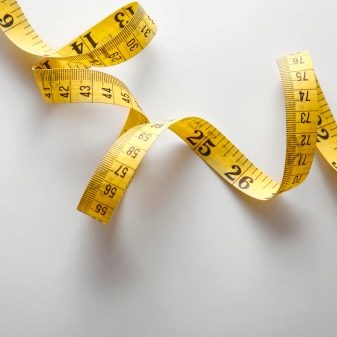All about running meter of fabric

The expression "running meter" is quite often heard in hardware stores, and many people are perplexed, because it is difficult to immediately determine what it is and how it differs from an ordinary meter.
But in fact, it is easy to understand this problem and navigate by running meters, and not by square meters, when buying various goods is much easier than it seems at first glance. In this article, we will consider the meaning of this unit of measurement and how to calculate it.

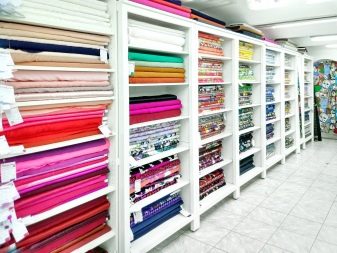
What it is?
The running meter is used to simplify measurements and calculations of long materials. 1 running meter corresponds to 1 regular meter, with the width set at the factory. Basically fabrics, linoleum, skirting boards, furniture sets, cables and wallpaper are measured in running meters. Such items are also known as long or curly. That is, these are those products that have a non-standardized width or section and a considerable length (as a rule, they are wound on a roll or wound on a bobbin). In fact, the term "running meter" does not exist because any meter is a running meter and means the length of any product without taking into account its other characteristics. It is also correct to say "linear material length".
For example, to buy curtains, we measure the length and width of the window. We expect that the length of the curtain is 2.2 m, and the width is 0.75 m.But in the store, the curtains are only standard widths of 0.5 m, 1 m and 1.7 m. Also, the cost of 1 m of canvas in length is the same regardless from the width.
Thus, you can purchase 2.2 running meters of fabric with a width of 0.5 m, 1 m or 1.7 m, and you pay for each meter of the length of the material, excluding the width.
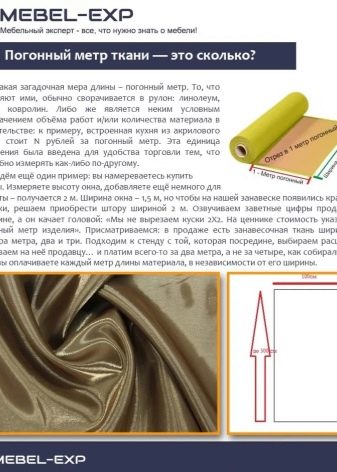
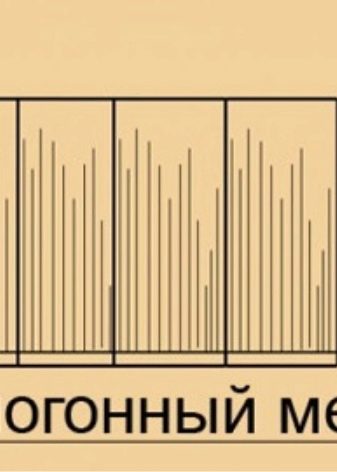
What is the difference from a square meter and how to translate?
Every person gets acquainted with a square meter during school time and knows that it is necessary for calculating the area of various objects. To find out the area, you need the values of the length and width of the object. Thus, the difference between a square footage and a linear footage is that to determine it, it is imperative to take into account the width of the material.
Converting a square footage to running meters is not difficult. To do this, it is necessary to divide the area of the material by its width. In the same way, we convert running meters to square meters: we multiply running meters by the width of the material.
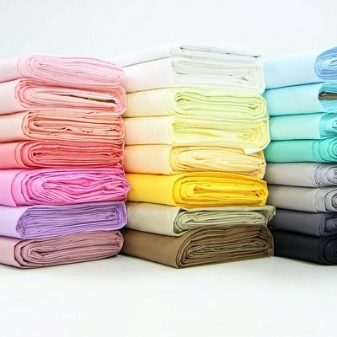

How to calculate?
This question is especially relevant for those who sew to order and need to understand the cost of the finished product. It will not be difficult to calculate the required material without experience. Suppose you need a cut with an area of 2.75 m, and the width of the proposed fabric is 1.5 m.To calculate the required number of meters, you need to divide the area of 2.75 m by a width of 1.5 m, and we get the linear length of the material 1.83 m.
To correctly measure the length and width of the material, it is necessary to spread it out on a flat surface so that it does not form folds or stretch too much. Otherwise, there will be an error in the measurements, which will lead to inaccurate calculations.


The length of the fabric can be measured with a measuring tape or tape measure, sometimes marks are applied to decorative materials from the wrong side. It is also advisable to indicate the length and width parameters when buying fabrics (in case of uneven surfaces) and count them in meters, not centimeters. It is also very important to double-check the calculations before they cut off the required amount of material for sewing the product, since the material sold per meter cannot be returned.
When calculating the required amount of material, do not forget about the seams and allowances in order to avoid mistakes when cutting. This should be especially noted with thin and crumbling fabric. As you can see, the concept of "running meter" means the standard width for a particular material and says that this is its value, not length. Moreover, there is nothing terrible or incomprehensible in this expression. To carry out the necessary calculations, it is enough to have a centimeter tape or, in extreme cases, you can contact a sales consultant.
